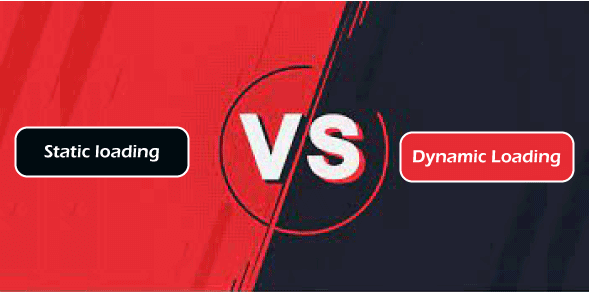Static and Dynamic Loading in Operating System
The operating system loads a library of functions during the execution of various programs. As the programs are processed, files are brought into the required memories. There are two types of loading processes: static and dynamic. In this article, you will learn about the difference between static and dynamic loading systems in operating systems. But before discussing the differences, you must know about the static and dynamic loading in the operating system.
Static Loading
Static loading is the process of loading the complete program into the main memory before it is executed.
Dynamic Loading
The complete program and all process data must be in physical memory to execute a process. As a result, the process size is restricted by the amount of physical memory available. Dynamic loading is utilized to ensure optimal memory consumption. In dynamic loading, a routine is not loaded until it is invoked. All of the routines are stored on disk in a reloadable load format. The main advantages of dynamic loading are that new routines are never loaded. This loading is useful when a huge amount of code is required to handle it efficiently.
Key differences between the Static and Dynamic Loading in Operating System

Here, you will learn the key differences between Static and Dynamic Loading in operating systems. Some of the key differences between Static and Dynamic Loading in operating systems are as follows:
- Static loading is the process of loading the complete program into the main memory before beginning program execution. In contrast, dynamic loading refers to the process of loading a program into the main memory on demand.
- Static loading links and builds the complete program without the need for extra software. On the other hand, all modules are loaded dynamically in dynamic loading. The developer references all of these, and the rest of the job is completed at execution time.
- Static loading is performed only in the case of structured programming languages like C language. In contrast, Dynamic loading happens in OOPs languages like C++, Java,
- Static loading has a faster processing time because no files are modified during the process. On the other hand, the processing speed of dynamic loading is slower because the files are uploaded at processing time.
- In static loading, the code can or cannot be executed once it is loaded into the memory. In contrast, in dynamic loading, the execution-only takes place when needed.
- The linker joins the object program and other object modules to form a single static-loading program. On the other hand, in dynamic loading, the linking process occurs dynamically in a relocatable form. Data is only loaded into memory when the program requires it.
- The main disadvantage of static loading is that it wastes memory because the code may or may not be run once it is loaded. On the other hand, dynamic loading greatly benefits efficient memory utilization.
Head-to-head Comparison between the Static and Dynamic Loading in Operating System
Here, you will learn the head-to-head comparison between Static and Dynamic Loading in the operating system. Some of the head-to-head comparisons between Static and Dynamic Loading in Operating Systems are as follows:
| Static Loading | Dynamic Loading |
|---|---|
| Static loading refers to loading the whole program into the main memory before executing the program. | Dynamic loading refers to the process of loading a program into the main memory on demand. |
| It is only performed in structured programming languages such as C. | It happens in OOPs languages such as C++, Java, and others. |
| Static loading links and compiles the entire program without the need for additional software. | All modules are loaded dynamically. The developer references all of these, and the rest of the job is completed at execution time. |
| The linker joins the object program and other object modules to form a single static-loading program. | The linking process occurs dynamically in a relocatable form. Data is only loaded into memory when the program requires it. |
| Unlimited data and the program are loaded into memory to begin execution. | In run time, data and information are loaded bit by bit. |
| When static loading is used, static linking is used as well. | When dynamic loading is used, dynamic linking is used as well. |
| Once the code is loaded into memory, it can be run or not. | Only when it is necessary is an execution carried out. |
| It has a faster processing time because no files are changed during the process. | The processing speed of dynamic loading is slower because the files are uploaded at processing time. |
